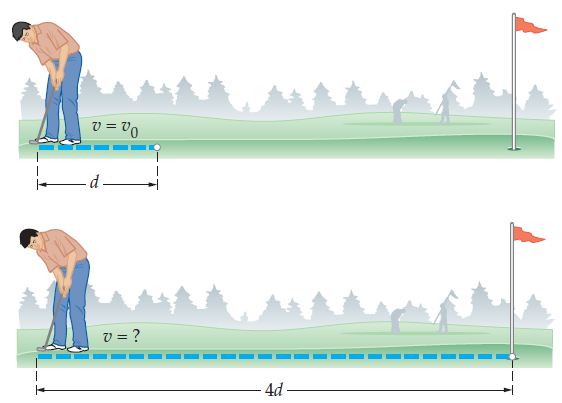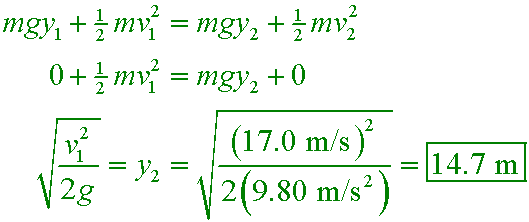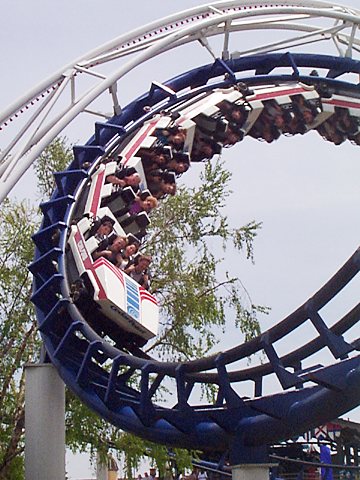Summary
- Work-energy theorem
- Power
- Gravitational potential energy
walker4
Reading quiz A golfer badly misjudges a putt, sending the ball only
one-quarter of the distance to the hole. The original putt gave the ball an
initial speed of v0. If the force of resistance due to the grass is constant,
what initial speed is needed to get the ball
to the hole from its original position?
 A. 2v0
A. 2v0
B. 3v0
C. 4v0
D. 16v0
Answer
If it takes 8.0 J of work to stretch a spring 12.0 cm from its unstressed length, how much extra work is
required to stretch it another 12.0 cm?
A. 8.0 J
B. 16 J
C. 24 J
D. 32 J
Answer
What speed will a frictionless roller coaster have at 3.0 m altitude if it began its run from rest at an
altitude of 10 m?
A. 8.37 m/s
B. 11.7 m/s
C. 70 m/s
D. 140 m/s
Answer
If you throw a ball upwards with a speed of 17 m/s, how high does it go? (Try to use conservation of
energy to answer the question)
A. 0.85 m
B. 1.70 m
C. 14.7 m
D. 28.9 m
Answer
C. 2v0
The work done by the friction from the grass during the first putt is
−½mv02. Because work is Fd, four times the distance
means friction will do four times the work during the second putt. That, in turn, means the ball needs
four times the kinetic energy to make it to the hole. A ball with twice the speed will have four times
the kinetic energy, so we need only double the initial speed.
C. 24 J

B. 11.7 m/s

C. 14.7 m



 A. 2v0
A. 2v0 

